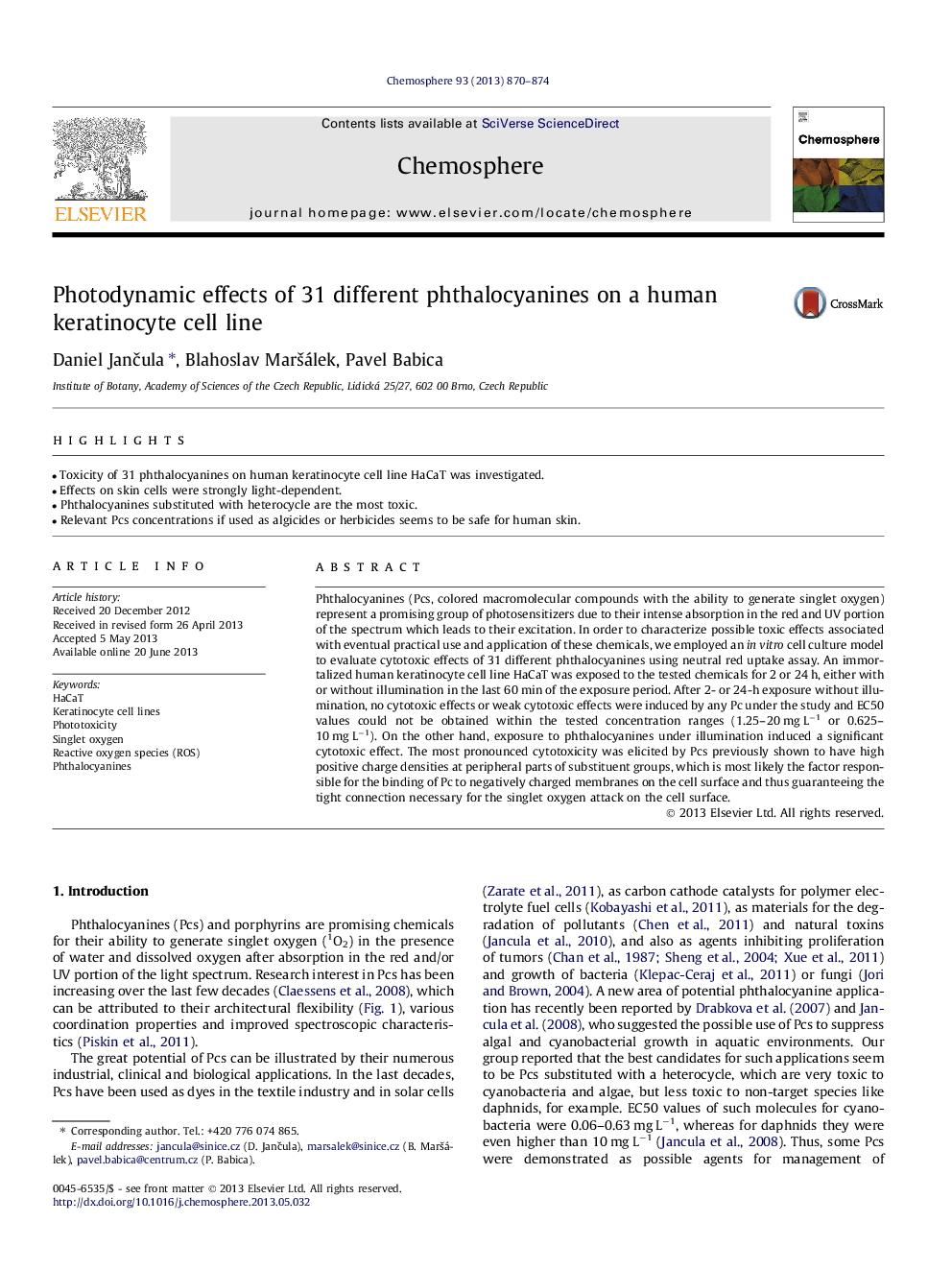| Article ID | Journal | Published Year | Pages | File Type |
|---|---|---|---|---|
| 6310251 | Chemosphere | 2013 | 5 Pages |
Abstract
Phthalocyanines (Pcs, colored macromolecular compounds with the ability to generate singlet oxygen) represent a promising group of photosensitizers due to their intense absorption in the red and UV portion of the spectrum which leads to their excitation. In order to characterize possible toxic effects associated with eventual practical use and application of these chemicals, we employed an in vitro cell culture model to evaluate cytotoxic effects of 31 different phthalocyanines using neutral red uptake assay. An immortalized human keratinocyte cell line HaCaT was exposed to the tested chemicals for 2 or 24 h, either with or without illumination in the last 60 min of the exposure period. After 2- or 24-h exposure without illumination, no cytotoxic effects or weak cytotoxic effects were induced by any Pc under the study and EC50 values could not be obtained within the tested concentration ranges (1.25-20 mg Lâ1 or 0.625-10 mg Lâ1). On the other hand, exposure to phthalocyanines under illumination induced a significant cytotoxic effect. The most pronounced cytotoxicity was elicited by Pcs previously shown to have high positive charge densities at peripheral parts of substituent groups, which is most likely the factor responsible for the binding of Pc to negatively charged membranes on the cell surface and thus guaranteeing the tight connection necessary for the singlet oxygen attack on the cell surface.
Related Topics
Life Sciences
Environmental Science
Environmental Chemistry
Authors
Daniel JanÄula, Blahoslav MarÅ¡álek, Pavel Babica,
